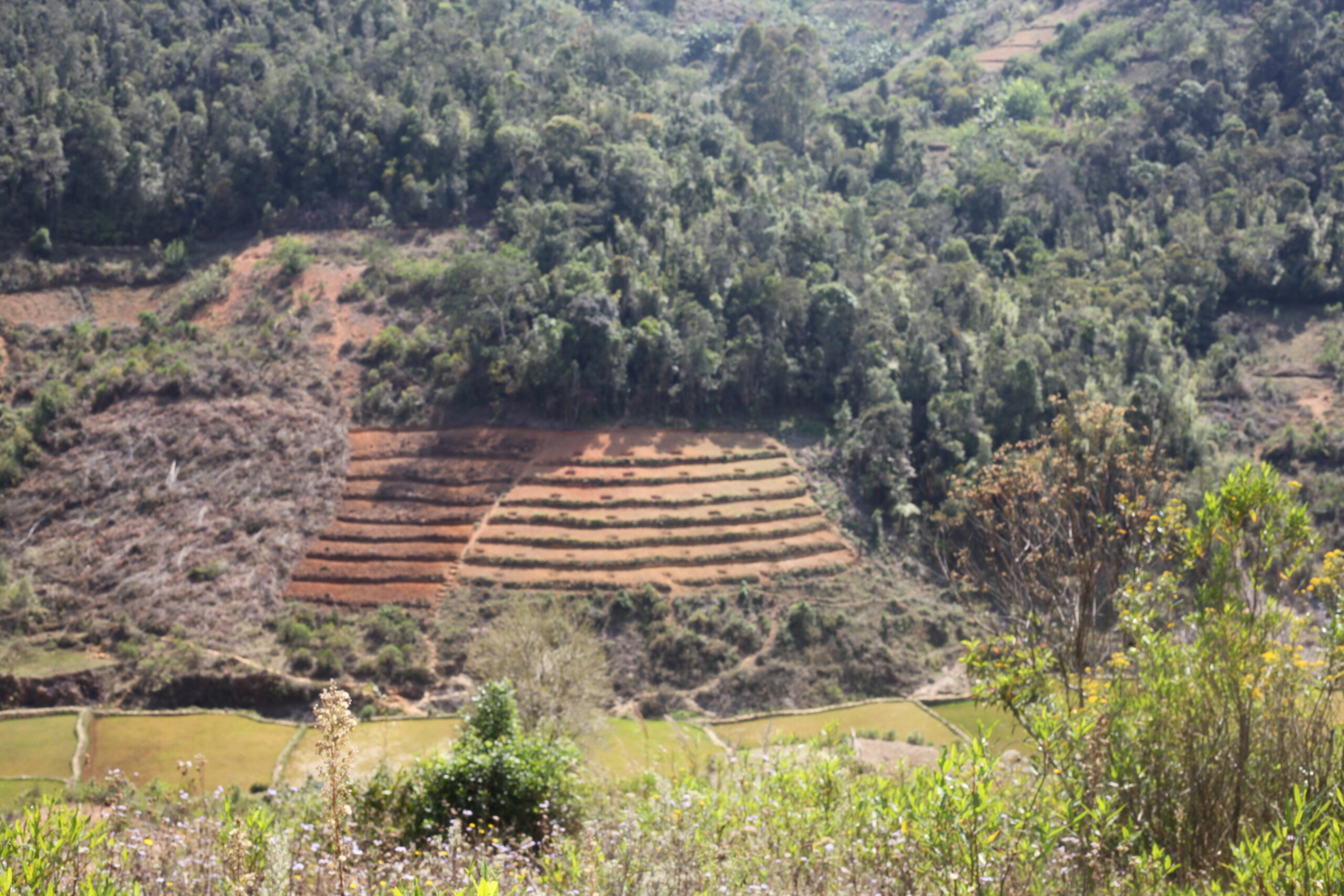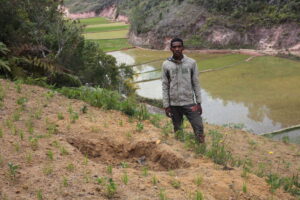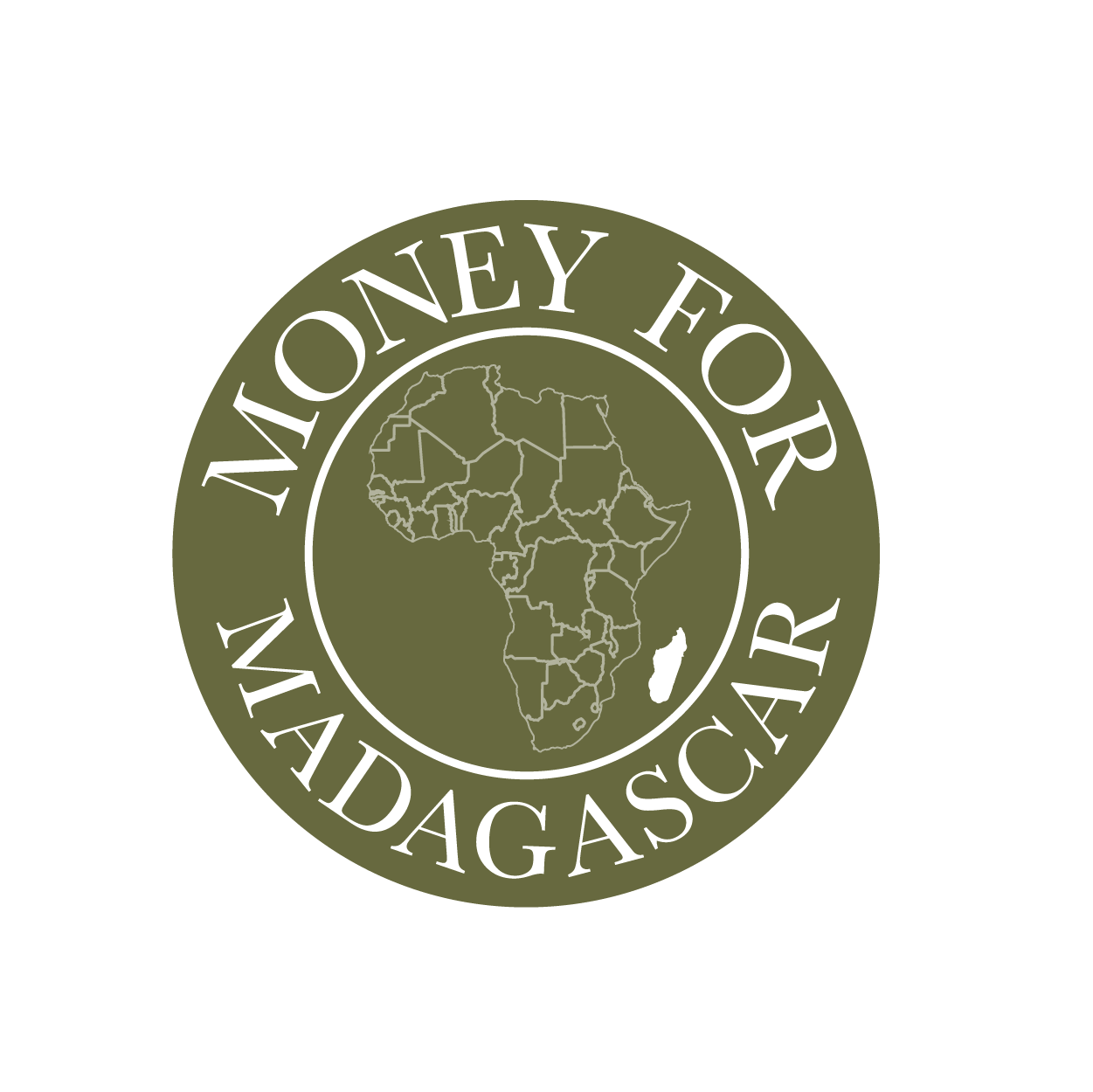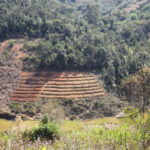
An accident of birth means Malagasy communities, including some living in severe poverty, find themselves charged not only with somehow keeping themselves and their families alive, but also with protecting some of the planet’s fertile and dynamic rainforest.
These two imperatives could clash with and contradict one another, but under our DAF programme, they are instead complementary. Because of DAF, the rainforest can thrive to the benefit of the entire planet, even as production, incomes and food security are increasing and improving for Malagasy men, women and children.
Malagasy men, women and children are reaping the rewards of an innovative new farming approach which safeguards fertile soil, protects Madagascar’s vital rainforest and increases family incomes and food security.
The Money for Madagascar Dynamic Agro-Forestry Project (DAF) has been working with Malagasy farmers in the Tsinjaorivo rainforest, training men and women in soil protection, methods to increase agricultural yield, and in protecting the forest itself.
Participants report in the scheme are celebrating its successes.
 Fidèle Randriamitantsoa, a relay farmer in Sarodrano Tsinjoarivo, said: ‘Before adopting the DAF technique, agricultural production on my land was very low, because the soil was not very fertile. I lacked the means to buy chemical fertilisers, so my harvests were mediocre.
Fidèle Randriamitantsoa, a relay farmer in Sarodrano Tsinjoarivo, said: ‘Before adopting the DAF technique, agricultural production on my land was very low, because the soil was not very fertile. I lacked the means to buy chemical fertilisers, so my harvests were mediocre.
‘After receiving training in DAF and seed technique, I learned to use organic fertilisers instead of chemical ones. I made vermicompost with half a cup of earthworms and produced 3m³ of fertiliser.’
Fidele’s successes have drawn the attention of his neighbours, friends and family.
He said: ‘DAF proved to me that it is possible to obtain good production even on a small surface. On a plot of land measuring 40x40m, I harvested 80 cups of beans from 17 sown cups. I also harvested three bredes soubiques (a Malagasy green, used in many dishes) from a 10g packet of seeds, and 500kg of potatoes using vermicompost.
‘My brother saw my harvests, and also decided to adopt DAF.’
DAF is a central part of our Forests and Livelihoods Programme, built on a model first developed by Nature Fund, and developing natural forest- and forest-like systems which enable high biomass production.
We started the programme in the Tsinjoarivo forest, which the Rainforest Trust identifies as a priority conservation site, where flora and fauna are under pressure of extinction from vulnerable farming communities who rely on the forest for their livelihoods.
Tsinjarivo is a remote, hard-to-reach location, meaning few organisations reach it with funding or initiatives, and its people have been left to fend for themselves, often in poverty, and have to try to make a living in difficult circumstances.
This seeming clash – between the survival of men, women and children reliant on what they can grow for food and income, and the remote forest in which they live and upon which the global ecosystem (and the forest’s unique animals and plants) relies – has instead, thanks to DAF, become a ‘virtuous circle’: DAF’s education and training in soil management and yield increases combines with forest protection, growth, and ‘young cutting’ to promote increased biomass production.
DAF’s training and support is enabling people to combat hunger and food insecurity, build better livelihoods, even as they restore land and protect forests to the benefit of the planet as a whole.
 Ms. Harilala, a young leader and president of GEC Andranomangatsiaka, learnt DAF techniques as part of the MfM programme, and has been using her new skills to develop and protect her land, increasing yields and improving her income, and her and her family’s food security.
Ms. Harilala, a young leader and president of GEC Andranomangatsiaka, learnt DAF techniques as part of the MfM programme, and has been using her new skills to develop and protect her land, increasing yields and improving her income, and her and her family’s food security.
She explained: ‘Before, I cultivated my plots in the traditional way, and if I obtained harvests, they remained modest. With the intervention of technicians from the NGO SADABE, I learned DAF techniques. Since I adopted them, my yields have increased considerably.
‘Previously, I practiced monoculture, which limited me to only one variety per harvest. Thanks to the DAF, I can now grow two to three types of vegetables simultaneously.’
DAF training also increased Ms. Harilala’s knowledge of crop combinations, including grouping together plants with complementary characteristics, such as plants with long and short leaves. It has also helped her in another vital way: improving her soil’s fertility and versatility.
In part because of heavier rainfall driven by climate change, many Malagasy farmers are at risk from their fertile soil being washed away into rivers or the sea. This soil cannot be easily replaced and is often lost for hundreds or even thousands of years.
Ms. Harilala said: ‘Before, I simply cultivated a large area without any further preparation. SADABE technicians taught me soil management techniques, including how to use contour lines to combat erosion. Since then, my soil remains fertile, because the cultivatable part is no longer washed away by the rains. I have also planted hedges at the edge of my plots to help stabilise the soil.’
This year (2024), using DAF techniques, Ms. Harilala harvested a variety of vegetables, including carrots, potatoes, peas, and bredes, meeting her family’s dietary needs. She was also able to sell part of her crop to obtain additional income.
She said: ‘I planted a 20g bag of carrot seeds and harvested 15kg, whereas before I only got 2 kg from the same surface!
‘I also harvested 30kg of potatoes from a plot of 5m x 5m, whereas previously, I harvested barely 10kg from this same area. For bredes, a small plot of 1m x 2m now allows me to feed my family for a week. Before, it only lasted two days.’
Even the soil management techniques which will enable Ms. Harilala to continue providing for herself and her family are also directly contributing to her income and food security.
She said: ‘I also planted pineapples along my fields’ contour lines to reinforce soil protection. I harvested 50. We kept 40 for ourselves, and I sold 10 for 10,000 Ariary.’


 English
English

